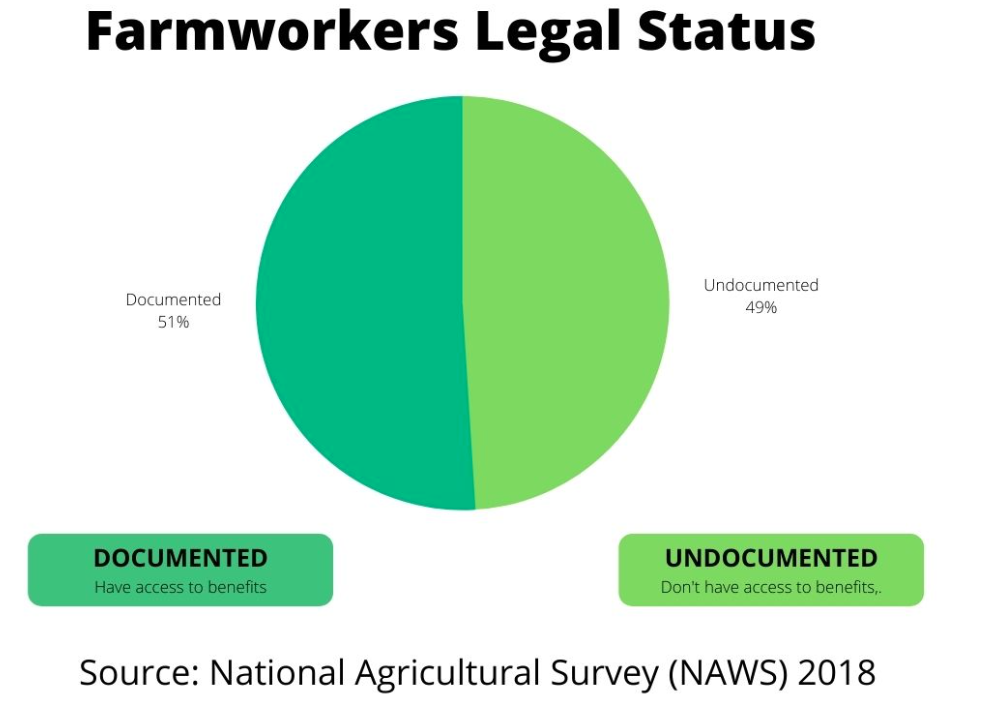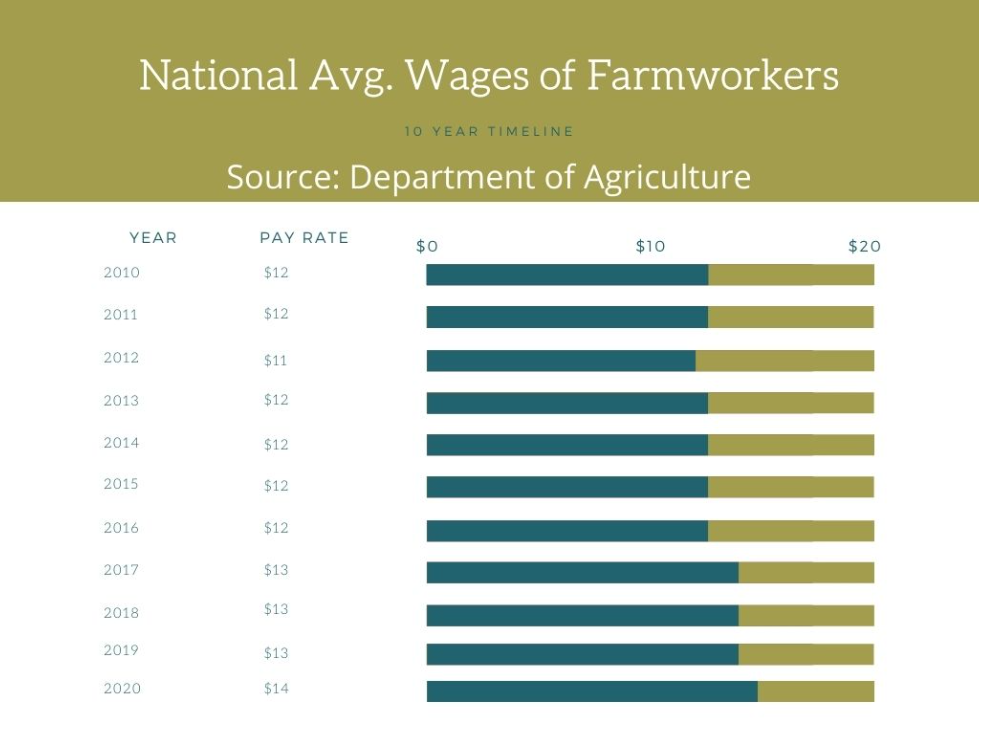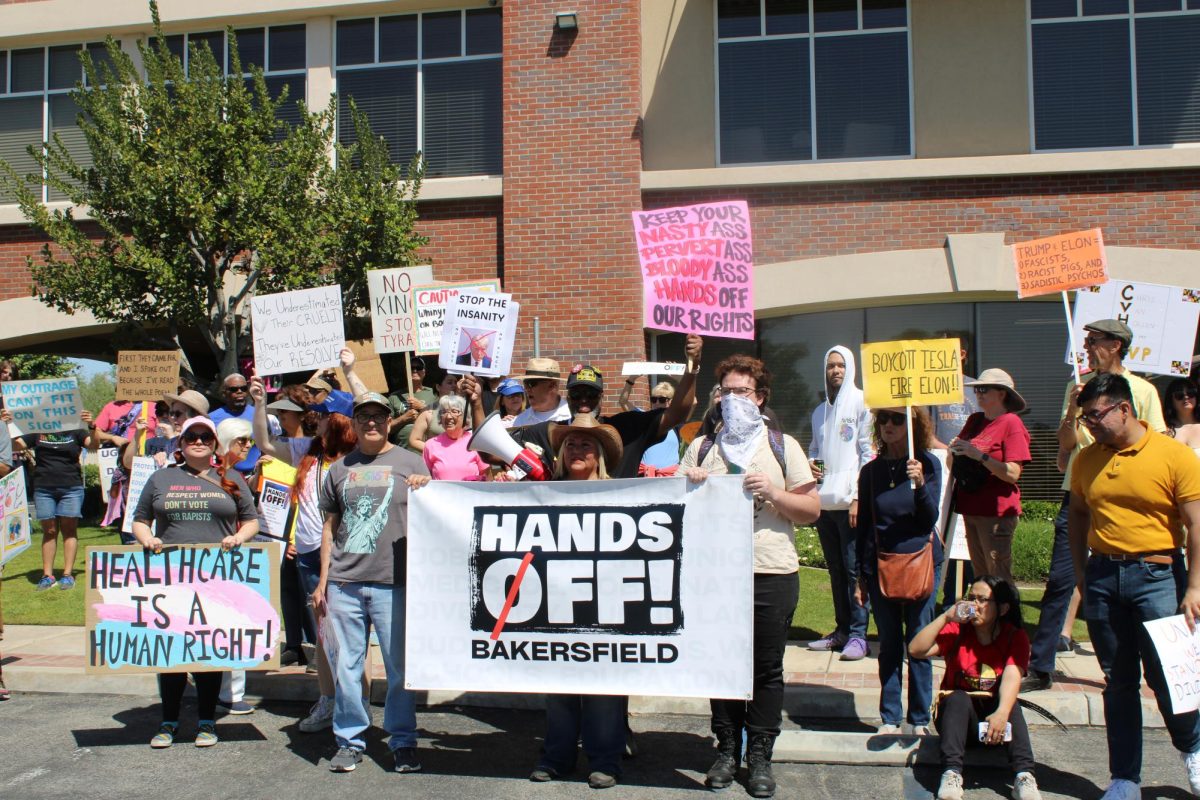Despite a rise in productivity and a desperate need for agricultural workers, wages have stayed relatively stagnant at the minimum wage for the occupation. Agricultural work is a significant part of our country’s economy, and even more significant for many Californian communities like Kern County.
Jesus Barraja, 22, and Manuel Contreras, 45 both work as farmworkers in Kern County and provide their experience on what realities can be like on the job. Both explained that it was low-paying, but it was work that was available and accessible.
Contreras talked about his daily routine of waking up at five in the morning, six days a week, having to pick out grapes for hours without rest.
“Lo que mas te recuerdas va ser el poder del sol. Todo el sudor, tu cuerpo ya cansado y queriendo agua, pero tu mente a veses te dice ‘no’ tienes que ser lo mas que puedas hasta que sientes en realidad que ya no puedes más,” dijo Contreras.
“What one will remember most is the power of the sun. All the sweat, your body tired and wanting water, but your mind is telling you ‘no’ you have to do as much as you can until in reality you can’t,” said Contreras.
When looking at the methods of pay for farmworkers there are two main ways. An hourly wage as an employee or to be hired through an independent contract that allows payment through a system known as the piece rate. The piece rate is paying field workers by the amount they’re able to pick; compared to its counterpart being a set hourly wage.
To further understand the correlation between wages and farmworkers, Aaron Hedge, Economics Professor at CSU Bakersfield helps elaborate.
Hedge explains that wage is typically set on how much a worker can generate and how much that output is valued in the marketplace. He continues explaining that in an equitable society, you would pay a worker a fair share, but in reality, that doesn’t tend to happen. He also gave the pros and cons of both the piece rate and an hourly wage in agricultural work.
An hourly wage isn’t as productive, there isn’t a set incentive to make something within the hour, but a worker has a set pay that they can rely on to live off of. The piece rate is really about getting as much productivity done as possible and does have the possibility of harming the product and therefore quality, and even worse the worker in the process.
Hedge even explains that contracts exist where pay can be docked if the quality of the fruits and vegetables isn’t up to standard after being picked.
“Minimum wage laws don’t apply to certain industries. One of them is restaurants and the other is field workers. It’s a little tricky because most field workers are contracted out, but the reality is if they are working really hard they will be hitting minimum wage,” said Hedge.
There’s also the conversation of documented vs undocumented workers. According to Hedge about half of the farmworkers in California are undocumented. So hourly wages are existent for agricultural workers with papers, those that don’t, only have the piece-rate option available. Hedge continues that typically with the piece rate for undocumented workers they can make around the minimum wage, but not a set $15 an hour; more around $9-15.

Hedge also explains that undocumented workers don’t receive benefits. Most people are accustomed to working and adding money toward social security for retirement, or if low-income can rely on food stamps to help put food on the table, government support programs that help put a roof over one’s head, and Medicaid to help out in medical emergencies or with medication.
Undocumented farmworkers don’t have the same access to support, but still provide so much to our communities explained Miguel Bucaro, a young activist for progressive policy.
Bucaro said a solution to this is the Agriculture Workers Program Act also known as the “Blue Card Bill”. This bill proposes that After 2 years of working in the fields, an individual can apply for this program and get protection from deportation and the entire family can apply for a work permit. After 3 years, this individual and their family can apply for residency, and later citizenship.
In terms of wages, Bucaro really pushes the idea of community-level activism. Asking people within the community to step up and speak out if certain employers don’t pay living wages or exploit farmworkers.
Hedge also explains that the reason that there really hasn’t been an increase in pay for all farmworkers is because of the industry standard and the number of workers there. The industry foundation relies on over-working and pushing the workers as much as possible to obtain products, and there tends to be an increase in pay when there is a lack of workers, which there is but even with not enough workers farmworkers are able to still bring in that massive productivity which results in low payments.
Data from the Department of Agriculture displays that the average wage of farmworkers stays standard with the minimum wage at the time. This data only pertains to legal farmworkers who are paid hourly though, and as Hedge elaborated it is quite different for those who are not documented or on the piece rate where the wage is completely up to the employer’s contract.

Barraja and Contreras, are both farmworkers but were paid differently. Barraja was paid an hourly wage of $15 and was given the option of both hourly and piece rates. He explains that he chose the hourly wage because it felt safer.
“Me suento mas agusto con esta (pagamentos por la hora) opcion. No tengo tantas obligaciones horita en mi vida y por eso no quieria estresar me con puensamuentos como ‘cuanto voy a tener que juntar’ o ‘no puedo usar el bano, tengo garar sufficiente antes que se termina el jale’,” digo Baraja.
“I feel safer with this (hourly wage) option. I don’t have that many obligations right now in my life and that’s why I didn’t want to stress over thoughts like ‘how much will I have to get’ or ‘I can’t even use the bathroom because I have to get this amount before the shift ends,” said Barraja.
Barraja also explains that he’s here on a work permit, and plans on coming back seasonally from Mexico in order to make a lot more money than is offered there to him.
Contreras chose to have the piece rate and explains that it has been an opportunity for him to make more money than minimum wage. According to Contreras, the piece rate is different everywhere, it just depends on who the contractor is. Some can be very exploitive and others genuinely are wanting to be fair.
“Yo tengo la opputunidad de ganar mas que $15. Nomas depende en cuantas libras puedo juntar de uvas. Por mas o menos 9 horas, si puedes garar pas de 20 libras de uvas te dan 2 dolares mas por cada 5 mas libras, pero siempre te dan $15 la hora,” dijo Contreras.
“I get the opportunity to get more than $15. It depends on how many pounds I’m able to pick of grapes. For around 9 hours if you can get more than 20 pounds you get 2 dollars more if you get an additional 5 pounds, but they always give $15 an hour,” said Contreras.
For Contreras, his employment offers him the chance to earn more, but he explained that he had previous jobs where he would not earn the minimum wage, or the employer would not want to stick to a piece-rate contract and give the money he had earned.







